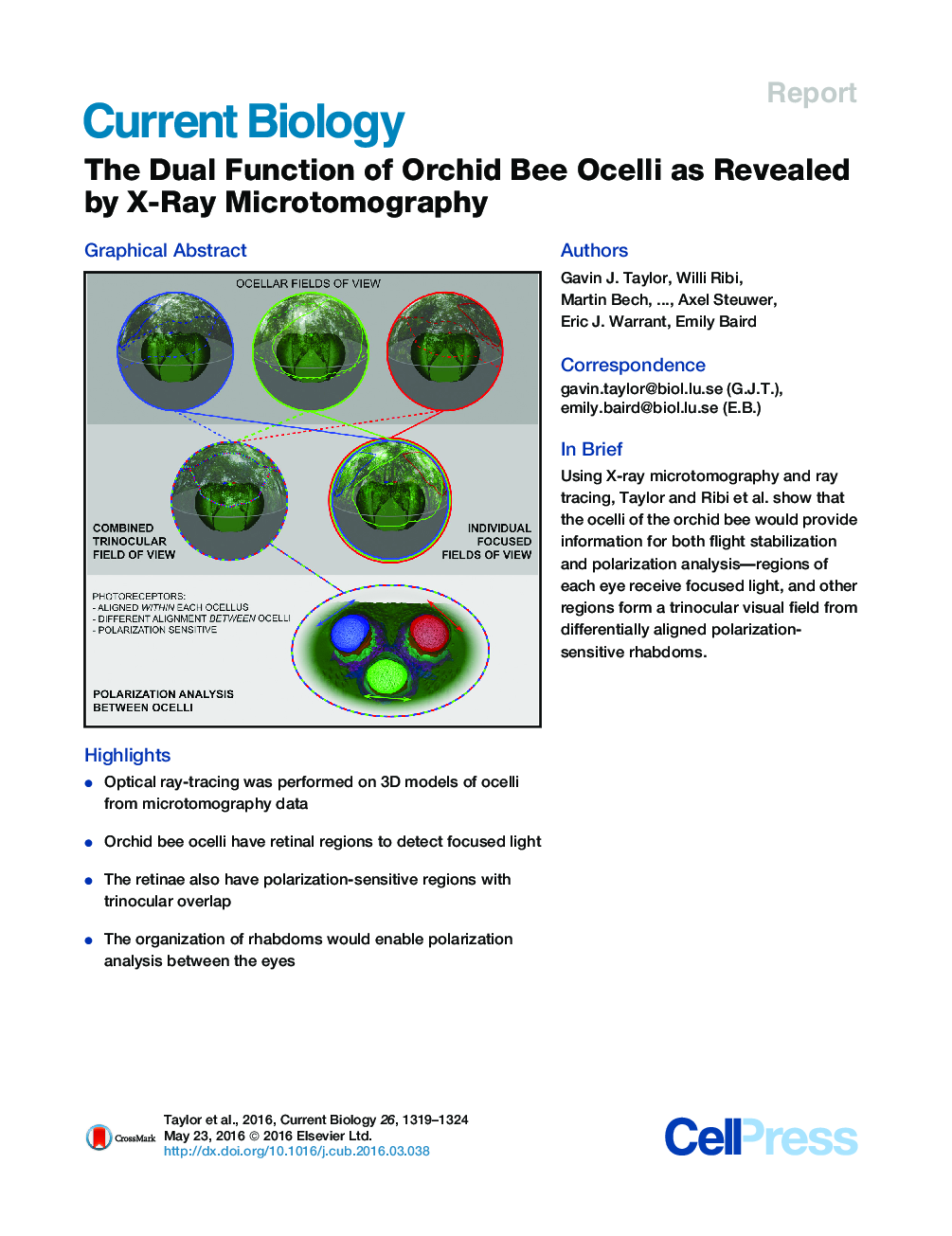| کد مقاله | کد نشریه | سال انتشار | مقاله انگلیسی | نسخه تمام متن |
|---|---|---|---|---|
| 2042648 | 1073228 | 2016 | 6 صفحه PDF | دانلود رایگان |
• Optical ray-tracing was performed on 3D models of ocelli from microtomography data
• Orchid bee ocelli have retinal regions to detect focused light
• The retinae also have polarization-sensitive regions with trinocular overlap
• The organization of rhabdoms would enable polarization analysis between the eyes
SummaryVisually guided flight control in the rainforest is arguably one of the most complex insect behaviors: illumination varies dramatically depending on location [1], and the densely cluttered environment blocks out most of the sky [2]. What visual information do insects sample for flight control in this habitat? To begin answering this question, we determined the visual fields of the ocelli—thought to play a role in attitude stabilization of some flying insects [3, 4 and 5]—of an orchid bee, Euglossa imperialis. High-resolution 3D models of the ocellar system from X-ray microtomography were used for optical ray tracing simulations. Surprisingly, these showed that each ocellus possesses two distinct visual fields—a focused monocular visual field suitable for detecting features elevated above the horizon and therefore assisting with flight stabilization [ 3, 4 and 5] and, unlike other ocelli investigated to date [ 4, 6 and 7], a large trinocular fronto-dorsal visual field shared by all ocelli. Histological analyses show that photoreceptors have similar orientations within each ocellus and are likely to be sensitive to polarized light, as in some other hymenopterans [ 7 and 8]. We also found that the average receptor orientation is offset between the ocelli, each having different axes of polarization sensitivity relative to the head. Unlike the eyes of any other insect described to date, this ocellar system meets the requirements of a true polarization analyzer [ 9 and 10]. The ocelli of E. imperialis could provide sensitive compass information for navigation in the rainforest and, additionally, provide cues for visual discrimination or flight control.
Graphical AbstractFigure optionsDownload high-quality image (312 K)Download as PowerPoint slide
Journal: - Volume 26, Issue 10, 23 May 2016, Pages 1319–1324
